-
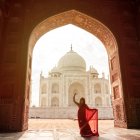 Embark on a Journey to Discover India. Your Guide to the Best Places to Visit in India in Every Season (2020)
Embark on a Journey to Discover India. Your Guide to the Best Places to Visit in India in Every Season (2020)
-
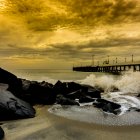 समुद्र तट, प्रकृति का जादुई सौंदर्य, अनूठा आकर्षण सब कुछ है - पांडिचेरी यात्रा के दौरान वहाँ क्या देखें, क्या खाएं, कहां खरीदारी करें: पांडिचेरी में घूमने के 10 सर्वश्रेष्ठ स्थान (2020)
समुद्र तट, प्रकृति का जादुई सौंदर्य, अनूठा आकर्षण सब कुछ है - पांडिचेरी यात्रा के दौरान वहाँ क्या देखें, क्या खाएं, कहां खरीदारी करें: पांडिचेरी में घूमने के 10 सर्वश्रेष्ठ स्थान (2020)
-
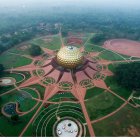 Looking for a Calm and Peaceful Vacation in Complete Harmony with Nature? Visit Auroville Pondicherry – The City of Dawn (2020)
Looking for a Calm and Peaceful Vacation in Complete Harmony with Nature? Visit Auroville Pondicherry – The City of Dawn (2020)
Things You Should Know Before Visiting Tuscany
Tips for Visiting Tuscany
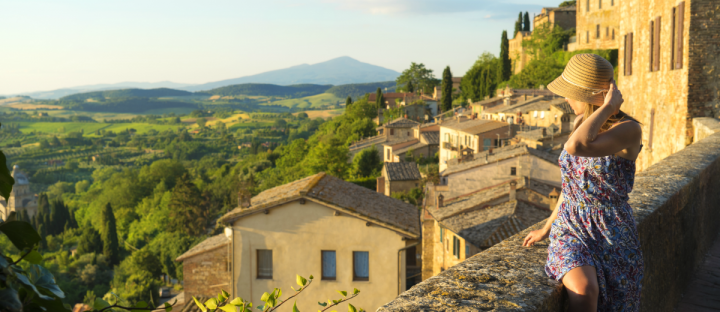
Before you finalize your travel plans for Tuscany, there are a few things to keep in mind to make the most of your trip.
- Language: English is spoken everywhere, however, a few Italian phrases will help you go a long way. Italians are usually very warm and polite. For ‘good day’, best to use "buon giorno", while for a good evening, the appropriate words would be, "buona sera" and “arrivederci” for goodbye. “Grazie” is apt for expressing thanks and if you don’t understand something that’s been said to you, you can reply by saying “Non capisco” (I don’t understand).
- Public Transport:When you plan your itinerary, do so in a linear fashion, as most trains and buses head to large hubs en route to someplace else. So it’d be wise to plan the order of your destinations to the best you can. Italy can be quite warm during the summer, hence it is important to carry water with you at all times and best to spend the hottest hours of the day indoors by visiting places like museum, or glorious cathedrals, which are relatively cooler, even though they aren’t air-conditioned.
- Pickpockets and Connectivity: Be mindful of your belongings as you will find pickpockets here. The pickpockets keep quite busy during the season, especially at crowded places and in the larger cities and on public transports as well. Unlike other nations, in Italy, options of finding shops with best SIM cards and their bundled data options are quite limited, hence it is best to look for an accommodation where WIFI is unlimited for use.
Tips on Eating Like an Italian
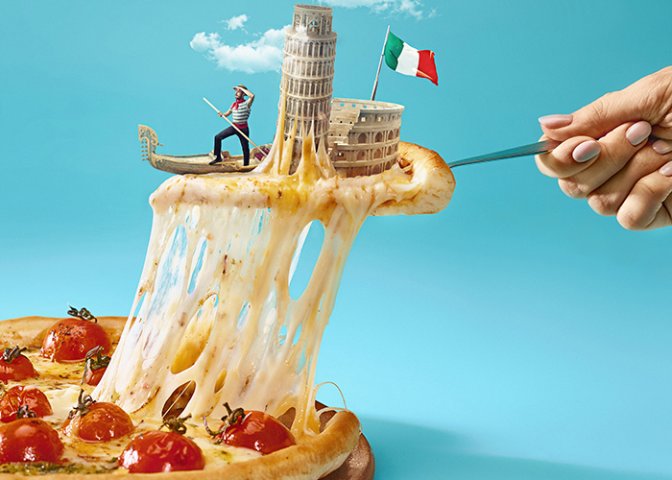
Food is an important aspect of any travel or holiday experience and Italian food is popular all over the world. However, what you must know is that Italian food is quite regional. It doesn’t matter how much or whether you have any know-how of the Italian cuisine at all. Although you may find pasta in a cream sauce wherever you go, it may not be called by the name you’re aware of. For instance, if you ask for pepperoni on your pizza, you may end up getting sliced peppers, roasted or pickled at times! Most salad dressings are just oil and balsamic vinegar as dressing for the greens. If you love cheese, then Italy’s your heaven on earth! In Tuscany, you’ll find a lot of Pecorino made of sheep’s milk, in a fresh/semi-aged or aged form, each with its flavour and taste. Similarly, wine is regional too with many options.
Breakfast here is quick and small. It is also a common practice to eat standing up at a coffee bar counter as there may be extra charges for sitting down! In Italy, you have Bars for drinking coffee and not really for liquor. ‘Coperto’ is a service charge for the cutlery and bread you use and is included in your bill, however tipping isn’t, so if you’d like to tip, feel free to add a few euros to the invoice, as there’s no set percentage for tipping here. A service tip is always welcome!
Smaller towns and shops function with a recess during mid-day which is usually between the hours of 1 pm and 4 pm, although the larger cities and shops are doing away with these norms. Lunch is always around 1 pm and kitchens start shutting down around 2.30-3.00pm. So it is wise to always finish lunch on time. Dinner’s typically around 8 pm and often goes late, with most restaurants open until 11 pm/midnight.
Transport & Accommodation

Make Uber your favourite pal when visiting Tuscany, for the service here is more professional than the local cabs. In Italy, the availability of Uber X which cuts down the price of local cabs by nearly 20% is a much better mode for travelling. The best way of getting around Tuscany is to hire a car. As soon as you get out of the Pisa Airport, there’s a car hire terminal which can be reached by the airport shuttle that takes around 5 minutes. Buying train or bus tickets isn’t enough, as most are open-ended and they aren’t available for a specific bus or train. So it is best to validate your tickets by putting them in the small machines that stamp your tickets with a date and time. At the train station, look out for other travellers and where they are headed, you will find the machines for stamping before/closer to the train tracks. For bus tickets, the machines are usually at the front or back doors.
The best base for your travel to Tuscany would be in the countryside, like the Barn at the Bagnaie in Chianti, set against the Tuscan countryside and a lovely place to relax, unwind, eat well and enjoy your stay. Depending on where you’d be staying you’d be able to explore markets, different farm activities, and vineyards in the neighbouring medieval hilltop towns.
Best Tourist Attractions in Tuscany
Florence
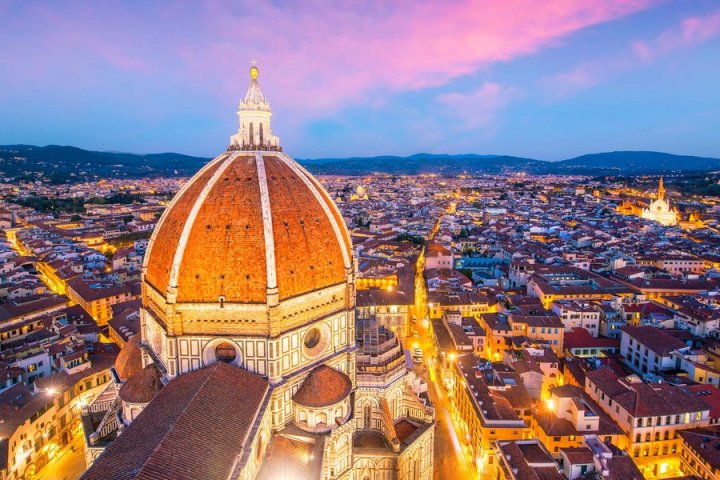
Known for its glorious landscapes, amazing architecture and artistic talent and its remarkable charm, Tuscany’s repute is preceded by only one other place, Florence. Popular for its extensive economic and political power through the reign of the Medici Dynasty, Florence is known to have offered a stage to the world for some of its best artists like Leonardo da Vinci, Michelangelo, Galileo and Brunelleschi. An embodiment of culture, arts and intellectuals, Florence is worth a visit, what with an ensemble of unique experiences and events that will not only create long-lasting memories of your trip here but also introduce you to the wondrous world of historic marvels like Piazzale Michelangelo, Uffizi Museum, the imposing Palazzo Della Signoria and more.
From art exhibitions to events that celebrate food & drinks, to musical shows, cultural events, historic and artistic wares, Florence has all this and much more to offer, includes its breathtaking cathedrals like the San Miniato, Santa Croce, Santa Maria Novella, some other significant mosaics, frescos, tombs and artworks that encompass marble sculpts, artwork and bronzes.
Pisa
The Leaning Tower of Pisa is a freestanding bell tower in the cathedral of the Italian city, renowned world over for its near 4 degrees lean owing to an unstable foundation. A significant symbol of Italy, the renowned Leaning Tower-Torre Pendente stands crooked beside the duomo and baptistery in an open space called the Campo Dei Miracoli – the ground of miracles. An amazing combination of artistic talent and the intricate marble arcades of Pisa’s 12th-century bell tower, the Leaning Tower would still have been one of Italy’s greatest sight, had it been straight! Very few visitors can resist the excitement and restlessness of climbing the 294 steps to the Tower’s tilting top. In addition to the campanile including a UNESCO World Heritage Site, the Cathedral of Santa Maria Assunta is a fine example of the Pisan style of architecture with its spectacular façade, pulpit and bronze door.
Long after you’ve admired the Tower of Pisa, continue your visit to other remarkable sites. Take a stroll along the river Arno, passing by the Clock Palace to enter the Piazza Dei Cavalieri, which was at one point in time the heart of political power in the city and later became the headquarter of Knights of St. Stephen.
Siena

One of Italy’s loveliest medieval townships, Siena was founded by Senius, son of Remus, one of the two iconic leaders and founders of Rome, because of which Siena’s emblem is that of a she-wolf who suckled Remus and Romulus. Sitting atop three hills, amidst a variety of Italy’s finest, Sienna’s glorious cathedral, Cathedral of Santa Maria Assunta is an out and out work of art, with its captivating façade crafted by Giovanni Pisano, in patterns of red, green & white marble, adorned with sculptures, a gorgeous rose window and Venetian montage above the doorways. Considered one of the best works from the genre of Italian Gothic, the alternating bands of black and white marble go deep inside, scaled by a roof spanning with gold stars across a blue field and the floor space paved in marble mosaic panels with biblical scenes.
The best part of its interiors is the skillfully etched marble pulpit by Nicola Pisano, the Cappella Chigi designed by Giovanni Lorenzo Bernini, an elite Baroque architect, with two of his sculptures and the Cappella San Giovanni Battista on the left transept. There are even better and more vibrant Pinturicchio murals in the Piccolómini Library, off the left aisle where the lavish 15th-century manuscripts are on display. A little ahead of the Duomo is Sienna’s Piazza del Campo, another beautiful and spacious scallop styled square, the site for the renowned Palio, horse race.
San Gimignano
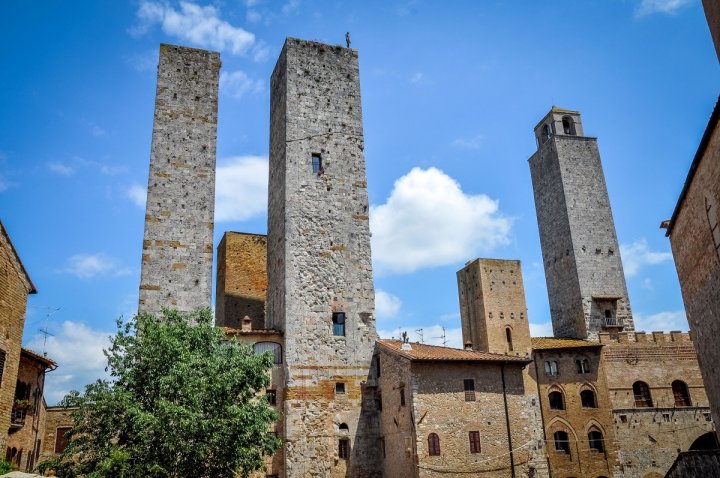
A small walled village, halfway between Siena and Florence, San Gimignano is known for its splendid medieval architecture and towers rising above all other constructs, thereby offering an impressive and glorious view of the city from the surrounding valley. At the peak of its glory, San Gimignano’s aristocratic families had initiated nearly 72 tower houses, symbolic of their power and wealth, of which only 14 remained. The village continues to retain its primitive feel and appeal and is now recognized as the UNESCO World Heritage Site, as was titled in 1990. San Gimignano offers its visitors an opportunity to travel back in time while enjoying its local products that includes saffron and white wine, the Vernaccia di San Gimignano.
Lucca

Located on a plain at the foot of the Apuan Alps, Lucca is less than 30 minutes from the coast of Versilia. An attractive city that is significant in the architectural history, and dates back to the Lombard Era, Lucca’s early medieval cathedrals were later reconstructed in the Middle Ages with some Tuscany’s most striking models of Roman Architecture. One of the most captivating visual attractions of Lucca, in addition to the must-see sights of the churches, museums and art, are the exciting experiences one can enjoy by taking a stroll or cycling along the walls encircling the city, climbing up the tree-shaded peak of the Guinigi Tower or browsing through the market stalls within the enclosed oval piazza, which was once a Roman Amphitheatre.
Giannutri

A small island off the Tuscany Coast in the Tyrrhenian Sea, Giannutri is an island at the southernmost side of the Tuscan Archipelago and is a frazione of the comune of Isola del Giglio in the Grosseto Province. Shaped like a crescent moon, Giannutri can be accessed from Isola del Giglio or Porto Santo Stefano, 15 and 12km away respectively. Boats reach at the Spalmatoio Bay or at the Maestra Bay, depending on the wind condition. Close to the bay of Maestra, there are impressive remnants of a beautiful Roman villa from the 2nd century BC. Giannutri is an adventurer’s paradise with a variety water activities you can engage in like scuba diving, snorkelling amidst the pristine sea beds, abundant in aquatic life, corals, underwater Posidonia meadows and ancient shipwrecks. Brimming with flourish and pure natural habitat, the island is warm and welcoming to visitors who’d like to explore the interiors as well as the towns which are a little more than a few clusters of houses overlooking the Spalmatoio Bay and an iota of other residences submerged in the Mediterranean Scrub.
Giardino Bardini

The Giardino Bardini is a 17th century Italian Rennaissance Garden and Museum in the hilly portion of Oltarno with amazing views of Florence Italy. With a restored villa constructed over 4 floors with 2 art exhibitions and museums, the garden is abundant with sculptures and panoramic vistas of the city, also boasting of wildlife that includes blackbirds, rock and wood pigeons. The garden is divided into 3 sections that oversee a great ornate flight of steps, bordered with irises, ascending to a belvedere with an expansive sight. It also includes an English garden with its Channel of Dragon and a farm area with near primitive hillside balconies planted with olive trees. The Giardino Bardini is open to visitors all days of the week from 8.15am to 4.30pm from November through February, till 5.30pm throughout March, until 6.30pm from April-May & September-October, and till 7.30pm from June through August.
Casentino
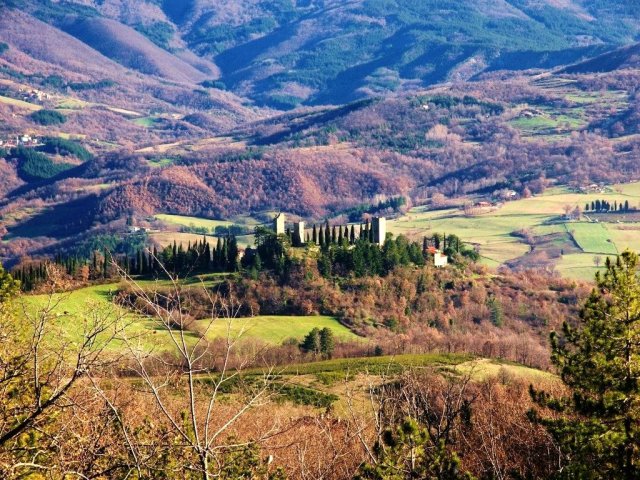
The Casentino is a valley through which the first expanse of the river Arno flows to Subbaiano, Italy. One of the 4 valleys that divide the Arezzo Province, the Casentino Valley is ripe with history, good food, art and outdoor activities. Located roughly 50km to the east of Florence, the valley extends the opportunity and experience of visiting castles, tasting authentic cuisine, trekking through age-old forestries and discovering the hidden mysteries from its locals to all its visitors. Some of the best places to explore here include the Franciscan sanctuary of La Verna, castles of Romena, Poppi & Ponciano, the Camaldoli Monastery, the small townships of Pratovecchio, Stia and Castel San Niccolò and the Poppi Zoo.
Chianti
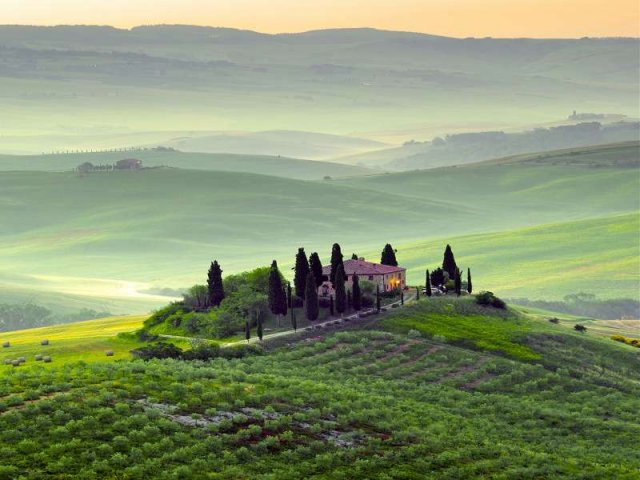
The breathtaking and diverse panorama in Tuscany is easily distinguished with its scenic and widespread landscapes, of which Chianti’s perhaps the most popular. Located in an area that encompasses both Florence and Siena, Chianti is as distinct in its vistas as it is in its wines. The several routes evident through the soft rolling hills, covered with strings of grapes, low lying forests, quaint hamlets and picturesque lodgings located in the stone farmhouses, cozy BnBs and premium villas have inspired many artists, poets, travellers and photographers for eons.
Chianti’s origins go way back to the time of Romans, Etruscans and the expansive populace of the two ancient sites of Siena and Florence, which is often an issue of conflict. Its nearly impossible to travel through the town without considering the opportunity to taste the diverse flavours of wine cultivated here or enjoying a fun bike ride, walking a guided tour or be driven around with your chauffeur. You can explore the different vineyards for wine tasting, and the wine cellars to witness the production of the renowned Chianti Classico. Chianti is also famous for its prized meats from Falroni and Macelleria Cecchini, honey, special local delicacies, cheese and more!
Livorno
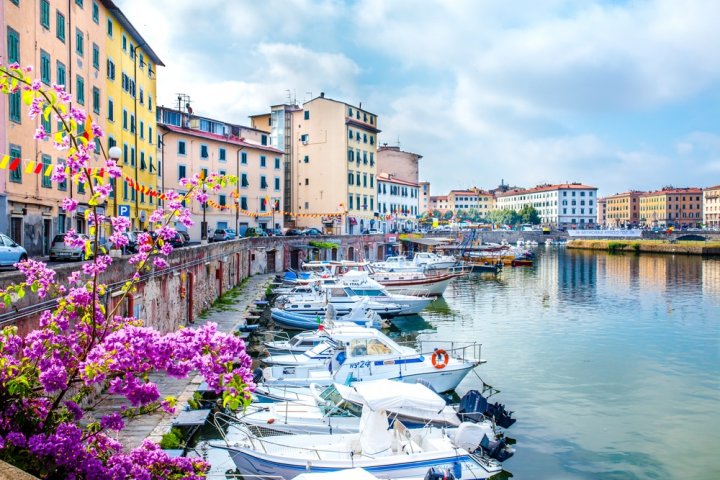
A charming city located on the Ligurian Sea, Western coast of Tuscany, Livorno is one of the most significant ports of Italy and a modern city, despite the archeological remains that remain unscathed after the World War II. Like any other port city, Livorno has been at a crossroad and melting pot of cultures across the globe, owing to its spectacular charm to this multi-ethnic feature. The city owes its repute to the Medici Family who contributed to its development and the seaport, charging Buontalenti, a renowned artist with the construction of a new & protected city with bastions and fosses. Visiting this charming city, its citadel, the synagogue and the quarter ‘La Venezia’ in addition to its water channels is an ideal holiday destination, especially for families, with an additional feature of several attractions that are family-centric as opposed to just visiting churches or museums. You can also explore the aquarium here with a variety of colourful fish, the sea, and refresh during the summer season.
Bonus Tip: Matching Steps with the Slow Pace of Tuscany

The thrill of planning a trip can be quite distressing in its entirety, especially if you’re battling with restrictions and time constraints, compelling you to pack in as much as you can in a short frame of time. Tuscany however, is a place where your speed isn’t going to help much, given that plans may change mostly, trains get delays, the restaurants may shut down unexpectedly or don’t have space for you. Here’s how you can have a good time and match up with the slow and relaxing pace of the beautiful city of Tuscany.
- In comparison to packing your days with infinite places to see and attractions to visit, focus on just a few, namely one region or area at a time.
- Take your time in enjoying each site and each activity to the best that you can. You don’t visit Tuscany often, relish each bite, savor every sip and breathe in the lovely sights.
- Connect with the locals and become familiar with their traditions, explore their traditional food. Italians really appreciate a keen interest of visitors into their culture and welcome them with open arms.
- Be flexible with time. If things don’t happen the way you want them to, it is best to embrace flexibility, keep calm and be kind, diving deep into how the locals function. If you internet’s not working due to poor network, instead of getting frustrated, view it as an opportunity to live in the moment and discover something new!
-
 The Dish Whose Name is Enough to Make Your Mouth Water in No Time, Yes We're Talking About Biryani! Check Out the Top Restaurants that Serve the Best Biryani in Hyderabad (2020)
The Dish Whose Name is Enough to Make Your Mouth Water in No Time, Yes We're Talking About Biryani! Check Out the Top Restaurants that Serve the Best Biryani in Hyderabad (2020)
-
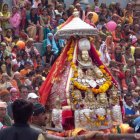 Why is the Dussehra Festival in Kullu so Famous? Everything You Want to Know About Dussehra in Kullu and Why it's a Must Visit (2020)
Why is the Dussehra Festival in Kullu so Famous? Everything You Want to Know About Dussehra in Kullu and Why it's a Must Visit (2020)
-
 Order Your Favourite Food from the Best Restaurants in India Using Uber Food Delivery: How to Use Uber Eats and Where to Order From (2019)
Order Your Favourite Food from the Best Restaurants in India Using Uber Food Delivery: How to Use Uber Eats and Where to Order From (2019)
-
 यह कोई आश्चर्य की बात नहीं है कि राजस्थान के कपड़े, प्रिंट, वस्त्र और गहने ने समकालीन फैशन को भी प्रेरित किया है: शाही शान के लिए हमारे 10 अविश्वसनीय राजस्थानी कुर्ती की लिस्ट देखे (2019)
यह कोई आश्चर्य की बात नहीं है कि राजस्थान के कपड़े, प्रिंट, वस्त्र और गहने ने समकालीन फैशन को भी प्रेरित किया है: शाही शान के लिए हमारे 10 अविश्वसनीय राजस्थानी कुर्ती की लिस्ट देखे (2019)
-
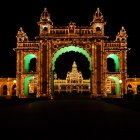 Celebrate Dussehra Like Never Before, Celebrate Dussehra in Mysore! BP-Guide's List of Major Attractions Around Mysore During Dussehra (2019)
Celebrate Dussehra Like Never Before, Celebrate Dussehra in Mysore! BP-Guide's List of Major Attractions Around Mysore During Dussehra (2019)
Italian Road Trips are Fun
Italy has a reputation for having some pretty ‘enthusiastic’ drivers and roads but doesn’t let that put you off. If you can drive, you should hire a car and discover some of the many hidden gems of Italy. Especially if you’re based in a large city like Pisa or Florence as the Tuscan countryside is as exciting to explore as its major cities! its always worth downloading an offline map on your smartphone (or use Google Maps offline feature). It’ll save you lots of time when trying to navigate the twisty turns streets of Venice, Firenze and pretty much any Tuscan village you visit.

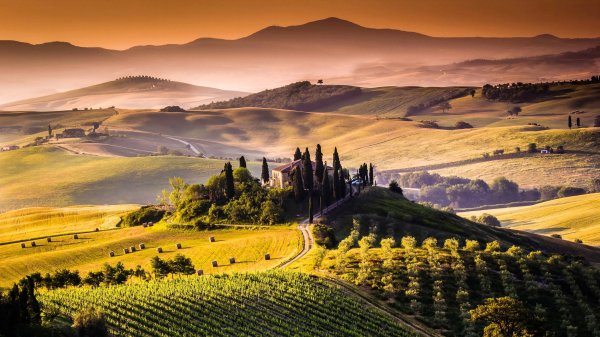

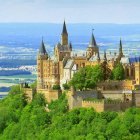
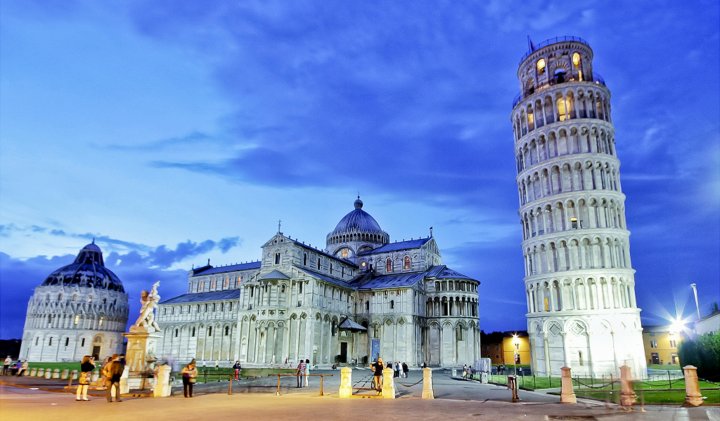

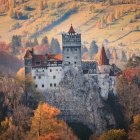

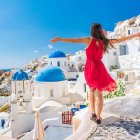
 Highlight the Best Facets of Your Incomparable Beauty: Discover the Best Face Highlighter Currently Available in India and Everything You Need to Know About Using Face Highlighters for Maximum Effect (2023)
Highlight the Best Facets of Your Incomparable Beauty: Discover the Best Face Highlighter Currently Available in India and Everything You Need to Know About Using Face Highlighters for Maximum Effect (2023)
 Forget the Blemishes and Get that Picture Perfect Flawless Radiance on Your Face: Check out the Best Foundations for Oily Skin Currently Available in India and Everything You Need to Know About Makeup Foundations (2023)
Forget the Blemishes and Get that Picture Perfect Flawless Radiance on Your Face: Check out the Best Foundations for Oily Skin Currently Available in India and Everything You Need to Know About Makeup Foundations (2023)
 Make Your Presence Felt Wherever You Go: Discover the Best Perfumes Under 2000 for Both Men and Women to Announce Your Arrival and Make Any Occasion Memorable (2023)
Make Your Presence Felt Wherever You Go: Discover the Best Perfumes Under 2000 for Both Men and Women to Announce Your Arrival and Make Any Occasion Memorable (2023)
 Protect Your Oily Skin from the Harmful Rays of the Sun: Discover the Best Gel Based Sunscreens for Oily Skin and Everything You Need to Know Before Buying One (2023)
Protect Your Oily Skin from the Harmful Rays of the Sun: Discover the Best Gel Based Sunscreens for Oily Skin and Everything You Need to Know Before Buying One (2023)
 Minor Blemishes and Wrinkles Affecting Your Confidence? Check out the Best BB Creams to Conceal Your Worries and Nourish Your Skin to Restore the Healthy, Radiant and Glowing Complexion Back Again (2023)
Minor Blemishes and Wrinkles Affecting Your Confidence? Check out the Best BB Creams to Conceal Your Worries and Nourish Your Skin to Restore the Healthy, Radiant and Glowing Complexion Back Again (2023)
